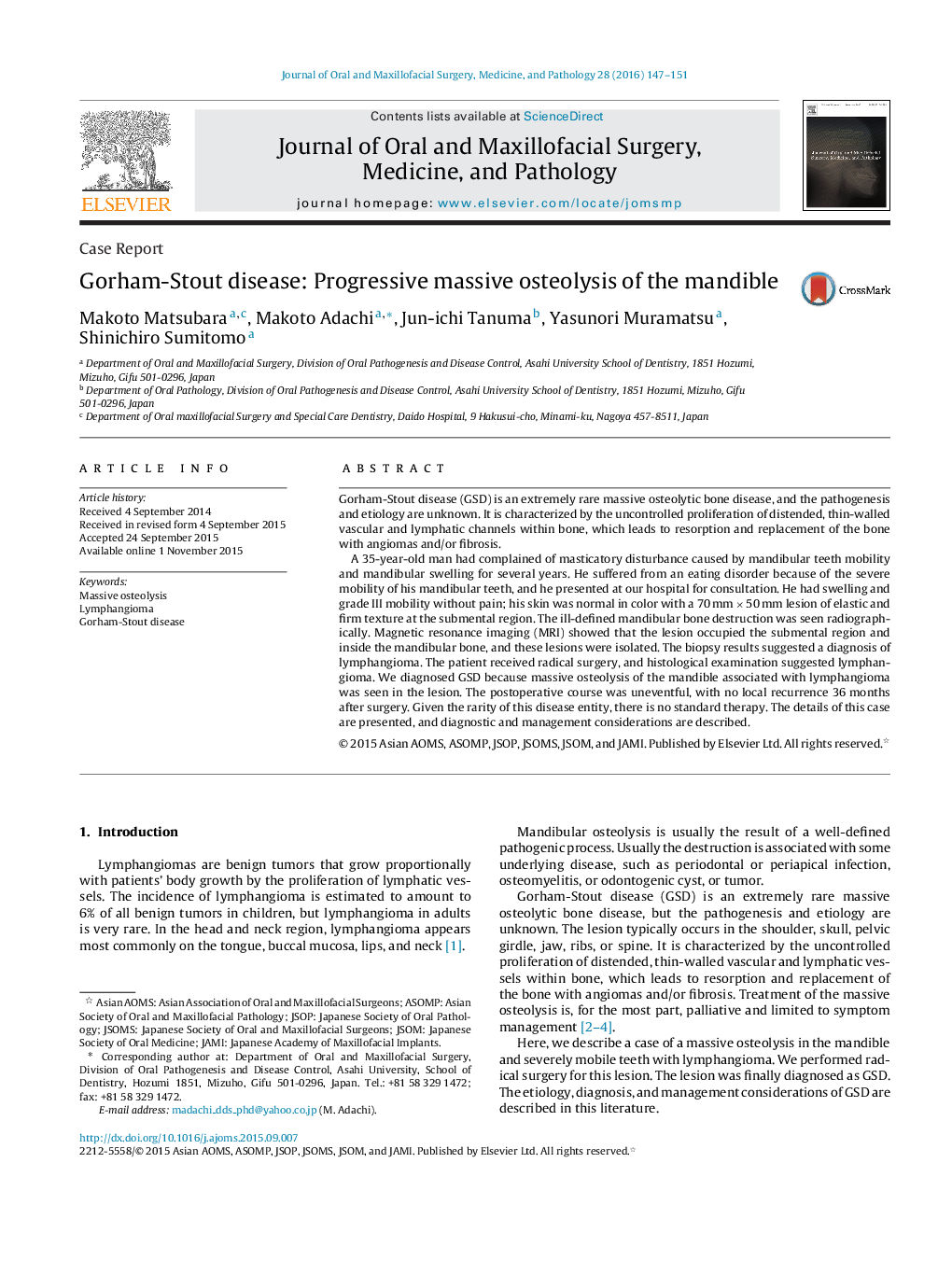| Article ID | Journal | Published Year | Pages | File Type |
|---|---|---|---|---|
| 3159373 | Journal of Oral and Maxillofacial Surgery, Medicine, and Pathology | 2016 | 5 Pages |
Gorham-Stout disease (GSD) is an extremely rare massive osteolytic bone disease, and the pathogenesis and etiology are unknown. It is characterized by the uncontrolled proliferation of distended, thin-walled vascular and lymphatic channels within bone, which leads to resorption and replacement of the bone with angiomas and/or fibrosis.A 35-year-old man had complained of masticatory disturbance caused by mandibular teeth mobility and mandibular swelling for several years. He suffered from an eating disorder because of the severe mobility of his mandibular teeth, and he presented at our hospital for consultation. He had swelling and grade III mobility without pain; his skin was normal in color with a 70 mm × 50 mm lesion of elastic and firm texture at the submental region. The ill-defined mandibular bone destruction was seen radiographically. Magnetic resonance imaging (MRI) showed that the lesion occupied the submental region and inside the mandibular bone, and these lesions were isolated. The biopsy results suggested a diagnosis of lymphangioma. The patient received radical surgery, and histological examination suggested lymphangioma. We diagnosed GSD because massive osteolysis of the mandible associated with lymphangioma was seen in the lesion. The postoperative course was uneventful, with no local recurrence 36 months after surgery. Given the rarity of this disease entity, there is no standard therapy. The details of this case are presented, and diagnostic and management considerations are described.
